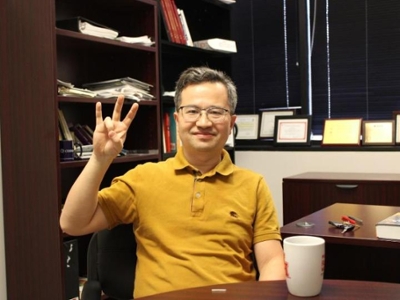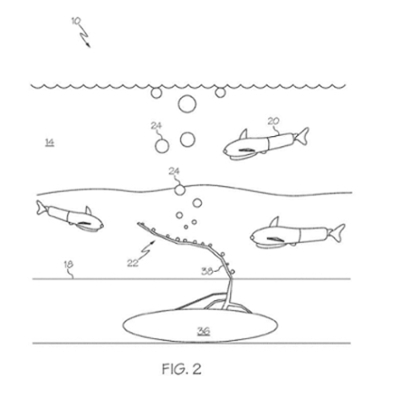
By Luke Rucker - Communications Intern, UH Technology Bridge
Zheng Chen, Bill D. Cook Assistant Professor of Mechanical Engineering at the University of Houston has unveiled a groundbreaking innovation that may be a valuable tool against climate change: the Robotic Carbon Dioxide (CO2) Leakage Detection Method and Apparatus.
With offshore carbon sequestration gaining momentum as a strategy to reduce atmospheric CO2 levels, Chen's invention uses autonomous underwater vehicles (AUVs) – or in other words schools of robotic fish – as a means to protect marine ecosystems.
Why Does It Matter?
Offshore carbon sequestration, which is the process of transferring industrial-generated CO2 into undersea rock formations or depleted gas reserves, while being crucial for carbon reduction, carries the risk of CO2 leakage into seawater. This could harm marine life by increasing water acidity.
Chen’s solution deploys a swarm of robotic fish equipped with highly sensitive pH sensors. These robotic agents autonomously map CO2 distribution in seawater, providing real-time data to identify leakage sources.
“They collect data, move up to the surface, then use wireless signals to transmit data. It is a more efficient way of collecting data,” Chen said. “These robotic fish do the data collection, as well as deliver the data to the base station more efficiently. That is why we think this could solve the technical problem of CO2 monitoring systems.”

Touting its environmentally conscious makeup and large-scale potential to curtail the effects of climate change, Chen said this product could be on the market in the next three or four years, given the right investment and development.
“We want to go for commercialization,” he said. “That is the motivation. We want to use these fish to benefit customers. This product would be greatly beneficial to environmental safety and could reach a huge market”
Why Should You Care?
Ocean ecosystems support diverse marine life and help regulate Earth's climate, therefore unhealthy oceans equal an unhealthy planet. Chen's cutting-edge technology is a true marvel, as it ensures no harm to the very ecosystems that need protection amid climate change.
Current Status
Collaborations with industry partners are essential to bring this innovation to the forefront of offshore carbon sequestration practices. By publishing this breakthrough, we seek industry partners who share our commitment to protecting marine ecosystems while advancing carbon reduction efforts.
Chen's invention offers a sustainable path toward a greener future without sacrificing our oceans.
This technology is available for licensing from the UH Office of Technology Transfer and Innovation. Please reach out to licensing@central.uh.edu for inquiries.
The patent number for this technology is PCT/US2023/012329. Read more about the technology.